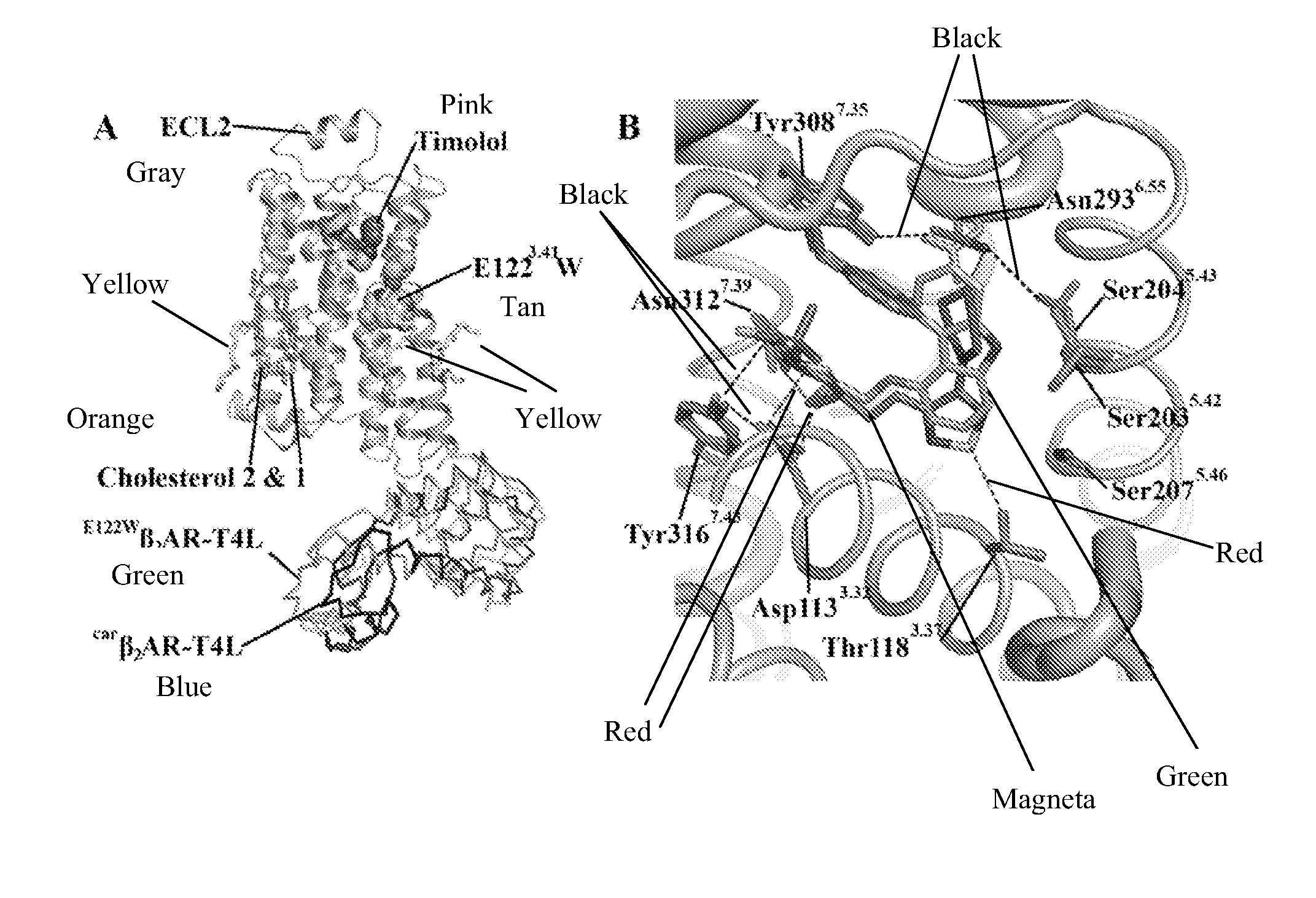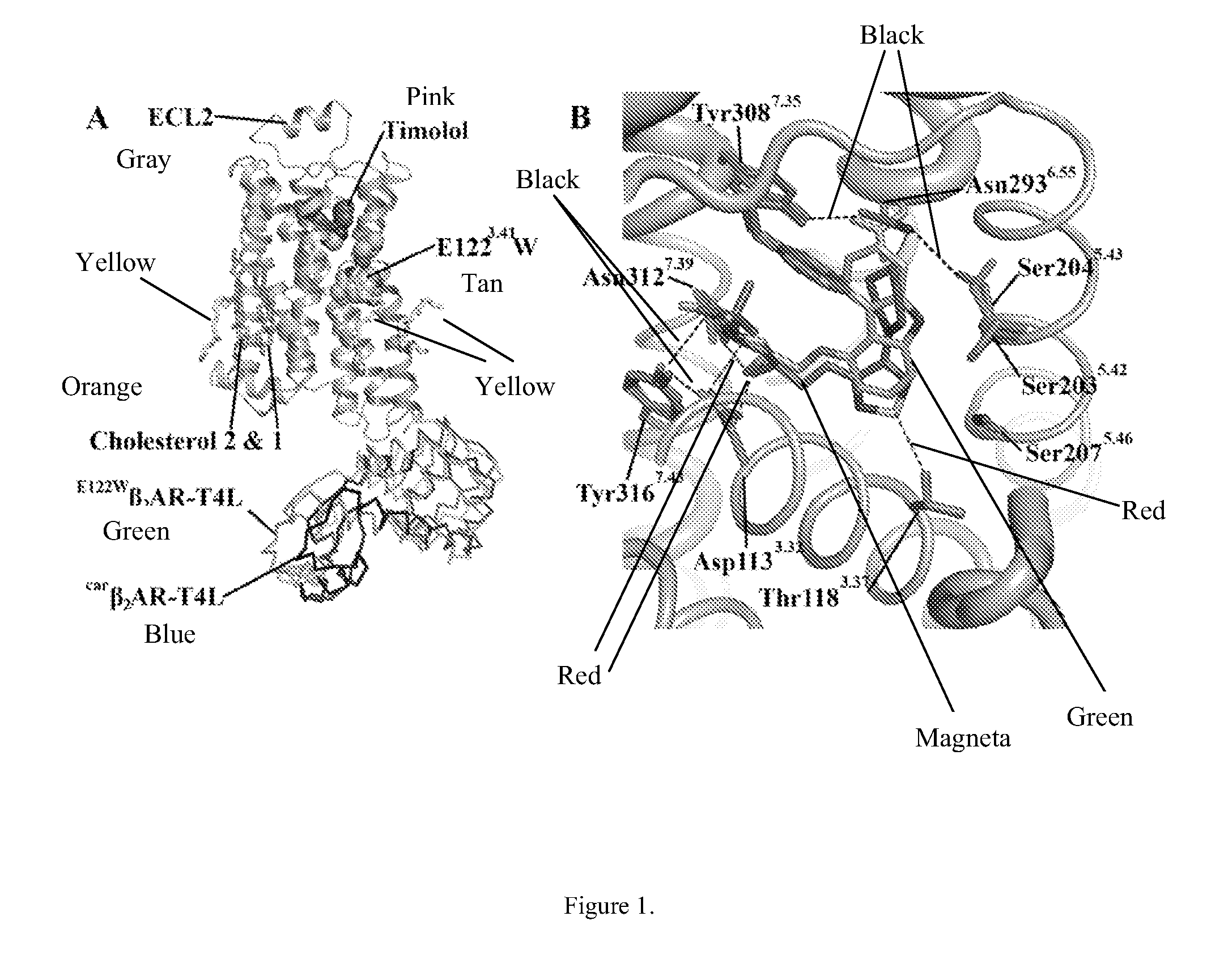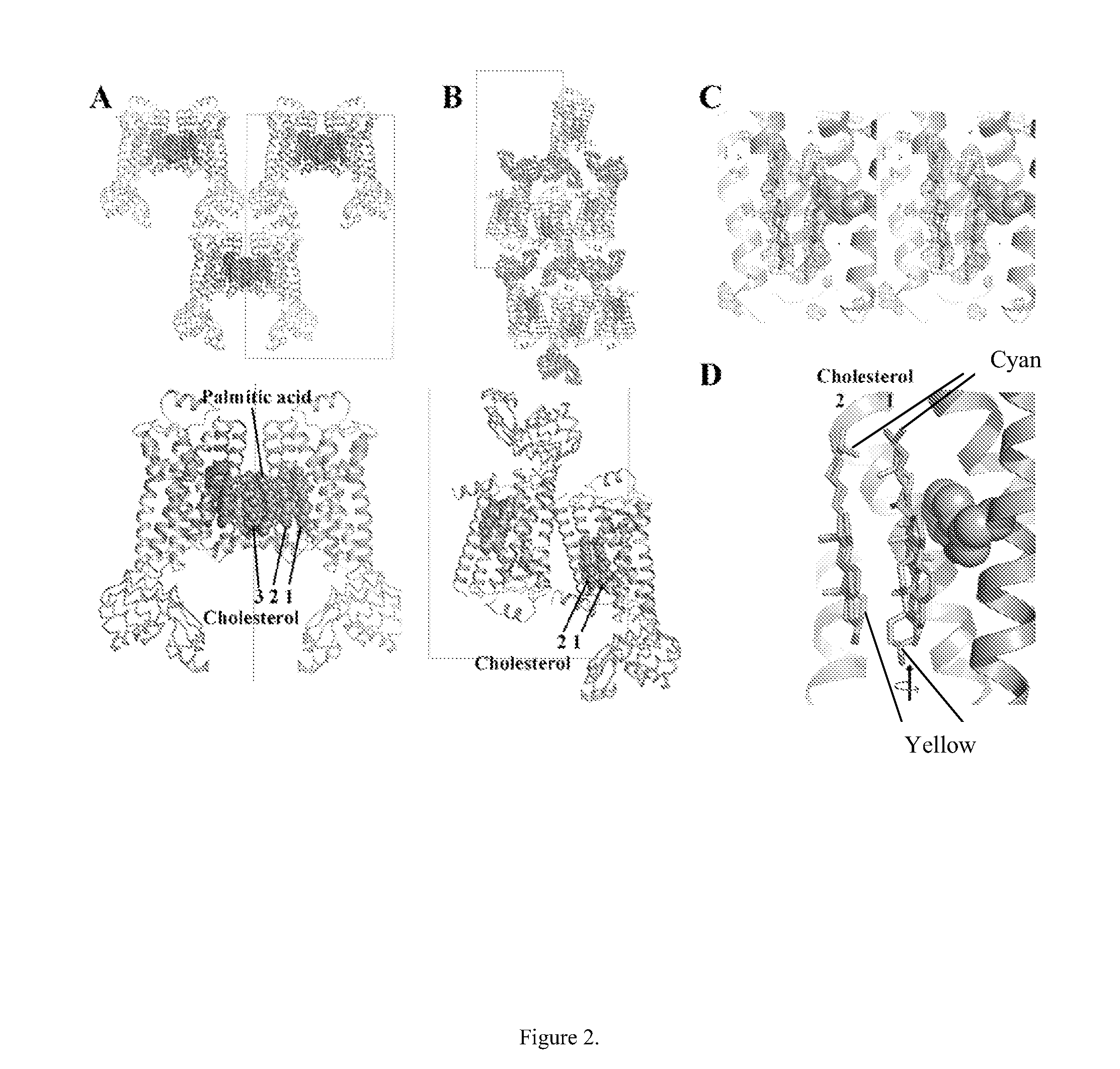Cholesterol consensus motif of membrane proteins
a cholesterol and membrane protein technology, applied in the field of chemistry and biophysics, can solve the problems of the specific manner by which cholesterol binds to gpcrs and the effects exerted by such binding remain largely uncharacterized, and achieve the effect of increasing the packing constraint and increasing the thermal stability
- Summary
- Abstract
- Description
- Claims
- Application Information
AI Technical Summary
Benefits of technology
Problems solved by technology
Method used
Image
Examples
example 1
Crystal Generation and Structure Solution
[0186]High-level expression of β2AR(E122W)-T4L was carried out in Sf9 insect cells using standard protocols. A simplified purification scheme was enabled by the presence of the E122W mutation, which resulted in a higher yield of functionally active receptor in the folded state than for the wild-type (85% for E122W vs. 25% for wild-type), as judged by size-exclusion chromatography using a fluorescent-labeled alprenolol probe and traditional binding assays (Roth et al., 2008). This shift to a functionally folded receptor eliminates the need for a ligand affinity chromatography step in the purification. In addition, the high expression levels of 2 mg of receptor per liter of cell culture enabled a single metal-affinity chromatography step to achieve greater than 90% homogeneity, thus mitigating the effects of delipidation on the final purified protein. The β2AR(E122W)-T4L was purified and crystallized in the presence of a saturating concentratio...
example 2
Timolol Binding Interactions
[0188]Given the established functional similarities between β2AR and β2AR(E122W) (Roth et al., 2008), as well as between β2AR and β2AR-T4L (Rosenbaum et al., 2007), we feel confident in drawing relevant conclusions from studies focusing on the molecular interactions associated with β2AR and its small molecule effectors using the β2AR(E122W)-T4L system, which, as shown here, is structurally equivalent to carβ2AR-T4L. The binding orientation of timolol is similar to that of carazolol, where the oxypropanolamine tail forms strong interactions with the polar triad (Asp1133.32, Asn3127.39 and Trp3167.43), and the morpholino-thiadiazole head group binds in a similar orientation to the carbazole head group of carazolol (FIG. 1B). However, two subtle yet relevant differences occur between the carazolol and timolol binding modes. The thiadiazole ring of timolol binds deeper into the receptor pocket allowing an additional hydrogen bonding interaction with Thr1183.3...
example 3
The β2AR Cholesterol Binding Site
[0189]Over the past few years, studies highlighting the effect of cholesterol depletion on ligand binding characteristics of a few receptors in membranes have been reported and recently reviewed (Pucadyil and Chattopadhyay, 2006). In addition, the thermal stability of both the oxytocin receptor and the β2AR is improved in the presence of cholesterol and cholesteryl hemisuccinate (CHS), respectively (Gimpl and Fahrenholz, 2002; Yao and Kobilka, 2005). For the oxytocin receptor, cholesterol or cholesterol analogues that enhance thermal stability also shift the receptor to the high-affinity agonist binding state implying allosteric modulation by cholesterol.
[0190]The structure of carβ2AR-T4L had interpretable density for three molecules of cholesterol per monomer of protein with visible density for the palmitate moiety that is post-translationally attached to Cys341 and located between cholesterol molecules 2 and 3 of a symmetry-related monomer (FIG. 2A...
PUM
| Property | Measurement | Unit |
|---|---|---|
| cutoff distance | aaaaa | aaaaa |
| pH | aaaaa | aaaaa |
| pH | aaaaa | aaaaa |
Abstract
Description
Claims
Application Information
 Login to View More
Login to View More - R&D
- Intellectual Property
- Life Sciences
- Materials
- Tech Scout
- Unparalleled Data Quality
- Higher Quality Content
- 60% Fewer Hallucinations
Browse by: Latest US Patents, China's latest patents, Technical Efficacy Thesaurus, Application Domain, Technology Topic, Popular Technical Reports.
© 2025 PatSnap. All rights reserved.Legal|Privacy policy|Modern Slavery Act Transparency Statement|Sitemap|About US| Contact US: help@patsnap.com



